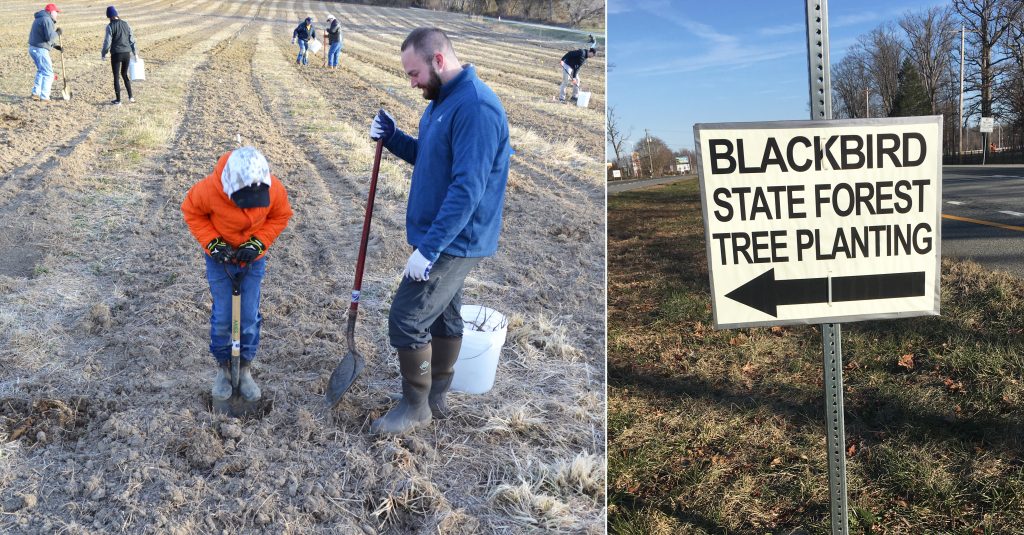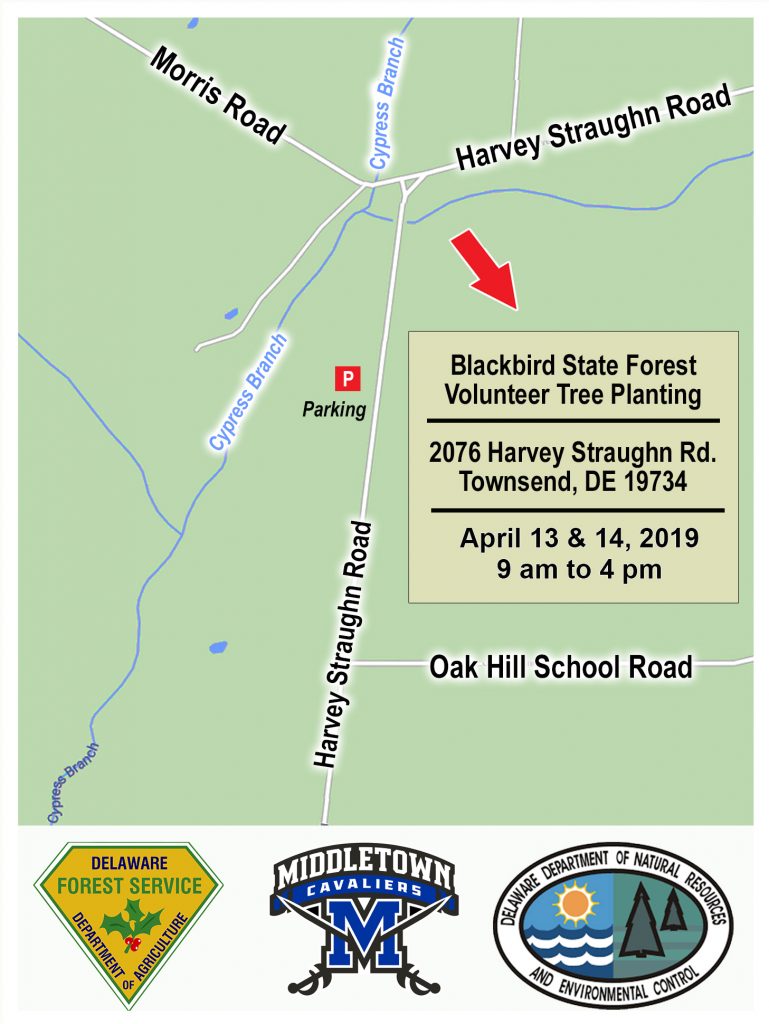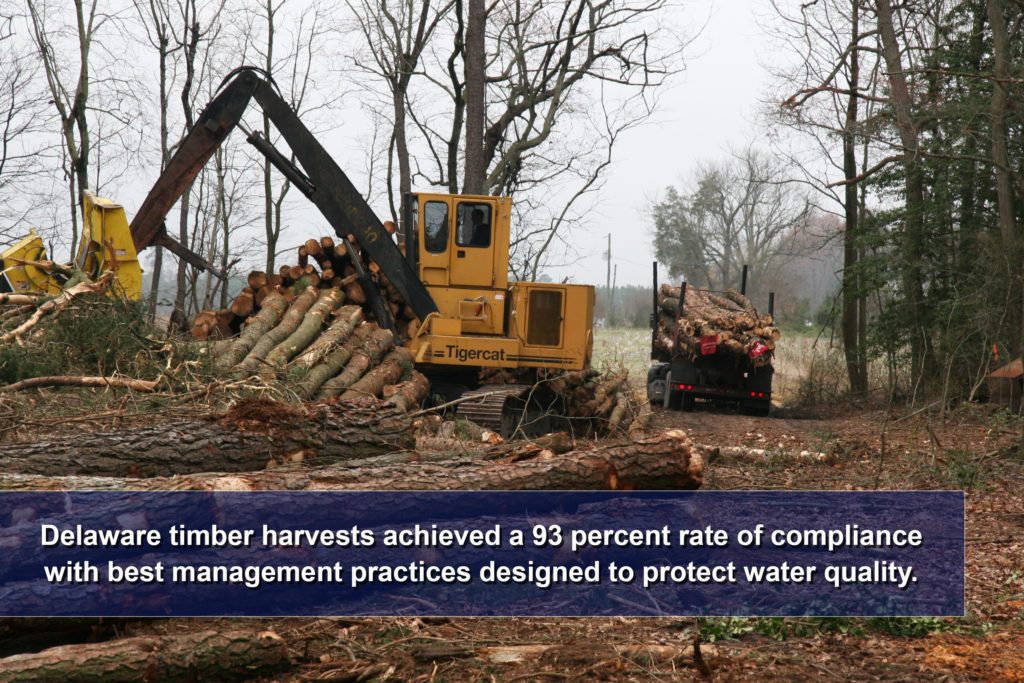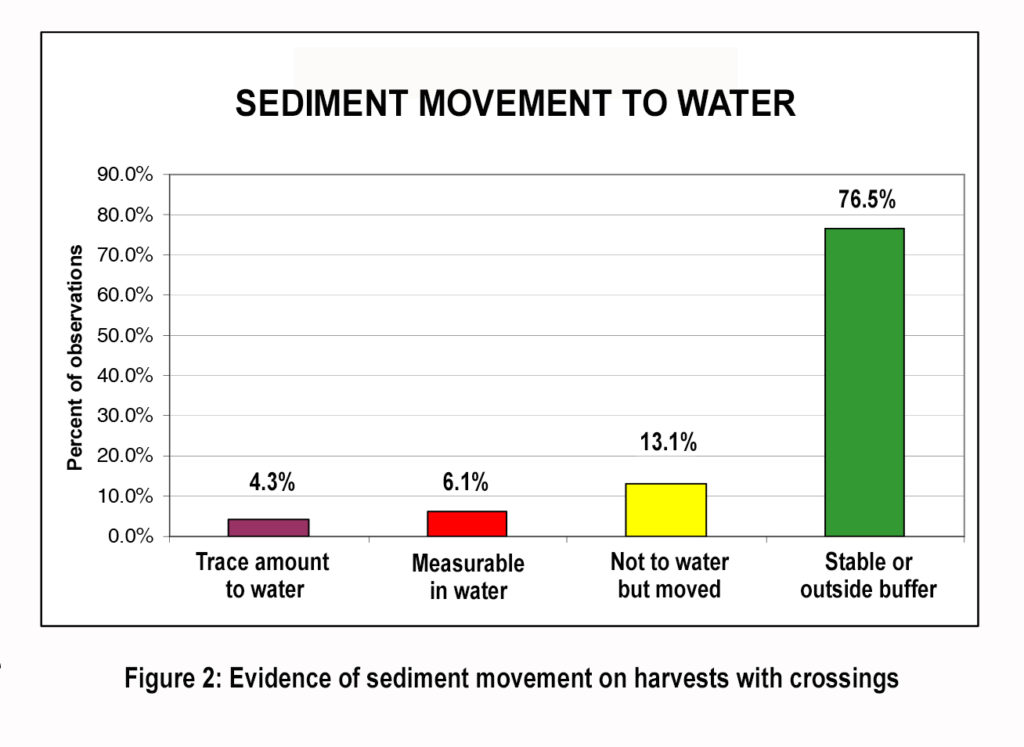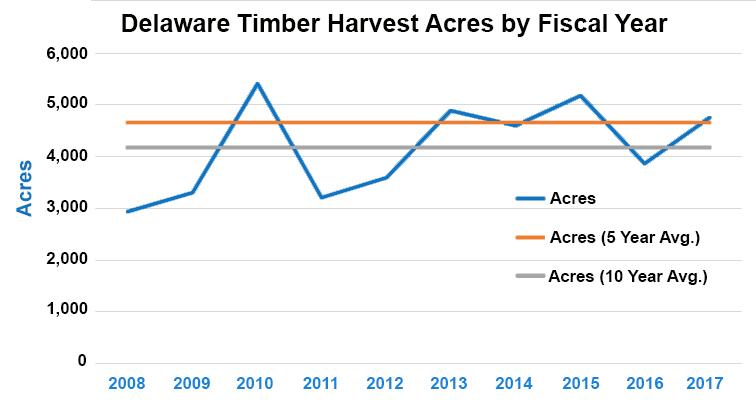TOWNSEND, Del. – Volunteers are needed to plant 2,000 hardwood seedlings at Blackbird State Forest on Saturday and Sunday, April 13 and 14, from 9 a.m. to 4 p.m. each day. Two seniors from Middletown High School, Bryan Alberding and Nick Kupsick, are leading the project in cooperation with the Delaware Forest Service with funding provided by the DNREC Nonpoint Source Program (NPS). The project will take place on Blackbird State Forest’s Naudain Tract, 2076 Harvey Straughn Road, Townsend, Delaware 19734.
The rain date is scheduled for April 27 and 28, 2019.
The planting site is located along the Cypress Branch, where the new trees will help enhance wildlife habitat, fight invasive species, and improve water quality in the Chesapeake Bay. The project continues a tradition of youth volunteerism and environmental action at Blackbird State Forest: in 2018, volunteers led by Girl Scout Caroline Dowd, a student at MOT Charter High School in Middletown, planted more than 8,800 seedlings on an adjacent parcel. In both 2012 and 2013, Boy Scouts planted 4,000 trees each year at Blackbird State Forest.
“Our project took a lot of time and planning, but it is important that everything was done correctly to maximize our success,” said Middletown High School senior Bryan Alberding. “I chose to do this project because I was concerned about the enormous housing growth in our community, and I wanted to improve the environment.”
“This project presents others with the opportunity to explore and learn how our forests start from the seedling to a mature tree, and how to properly plant the trees,” said Nick Kupsick,who is coordinating the effort with Alberding as part of their Middletown H.S. senior project.
Contact information for media:
- Bryan Alberding, phone: (302) 299-3052, email: bryannhunter@gmail.com
- Nick Kupsick, phone: (302) 757-3341, email: nkupsick76@gmail.com
Volunteers are asked to dress for the weather and bring sunscreen or insect repellent if needed.
What to wear and bring:
- work shoes or work boots that can get dirty
- appropriate clothing and hats that can get dirty and are suited to the weather (cold, rain, wind, or heat)
- a shovel if possible, as well as work gloves
The latest updates for the event will be posted on the students’ Facebook Page: Blackbird Tree Planting
Funding for the trees is provided by a grant from the DNREC Nonpoint Source Program. The restoration of riparian forests is a key strategy for improving water quality in the Chesapeake Bay, recognized as a “national treasure” and the largest estuary in North America, covering 64,000 square miles in six states and the District of Columbia. The Cypress Branch in southwestern New Castle County is one of the headwaters for the Chester River, a major tributary of the Chesapeake Bay that begins where Cypress Branch and Andover Branch join together in Millington, MD.
Blackbird State Forest covers nearly 6,000 acres in southern New Castle County and is also a stop on the historic Harriet Tubman Underground Railroad Byway.
Directions to the Blackbird Forest Tree Planting Site
- From the NORTH:
Route 1 (TOLL): Take Rt. 1 South to Exit 136 toward Odessa (Rt. 299) and make a left at the light. At Rt. 299 (Main Street) in Odessa, turn right onto U.S. 13 South.
U.S. 13: Take U.S 13 South until you reach Rt. 299 (Main Street) in Odessa. Proceed through the light (continue on U.S. 13 South). - From Route 299 & U.S. 13: Continue on U.S. 13 south for 6.2 miles and then turn right onto Blackbird Forest Road (flashing light at the top of the hill). After 3.5 miles, turn right onto Oak Hill School Road. Continue for 2.9 miles and then turn right onto Harvey Straughn Road. Proceed for .3 miles and the destination will be on the right.
- From the SOUTH:
Route 1 (TOLL): Take Rt. 1 North to Exit 119 (N. Smyrna). Make a right onto Route 13 South. Proceed .8 miles to Duck Creek Road and make a right at the light.
U.S. 13: Take U.S 13 North until you reach Duck Creek Road north of Smyrna (just past Visitor Center and Smokey Bear sign on the right). Turn left at light for Duck Creek Road. - From Duck Creek Road & U.S. 13: Proceed west for .8 miles on Duck Creek Road and turn right onto Vandyke Greenspring Road. Continue on Vandyke Greenspring Road for 4.4 miles and turn left onto Harvey Straughn Road. In 2 miles, turn left to stay on Harvey Straughn Road. Proceed for .3 miles and the destination will be on the left.
Additional contact –
John Petersen, Delaware Forest Service, 302-698-4552, john.petersen@delaware.gov
###
